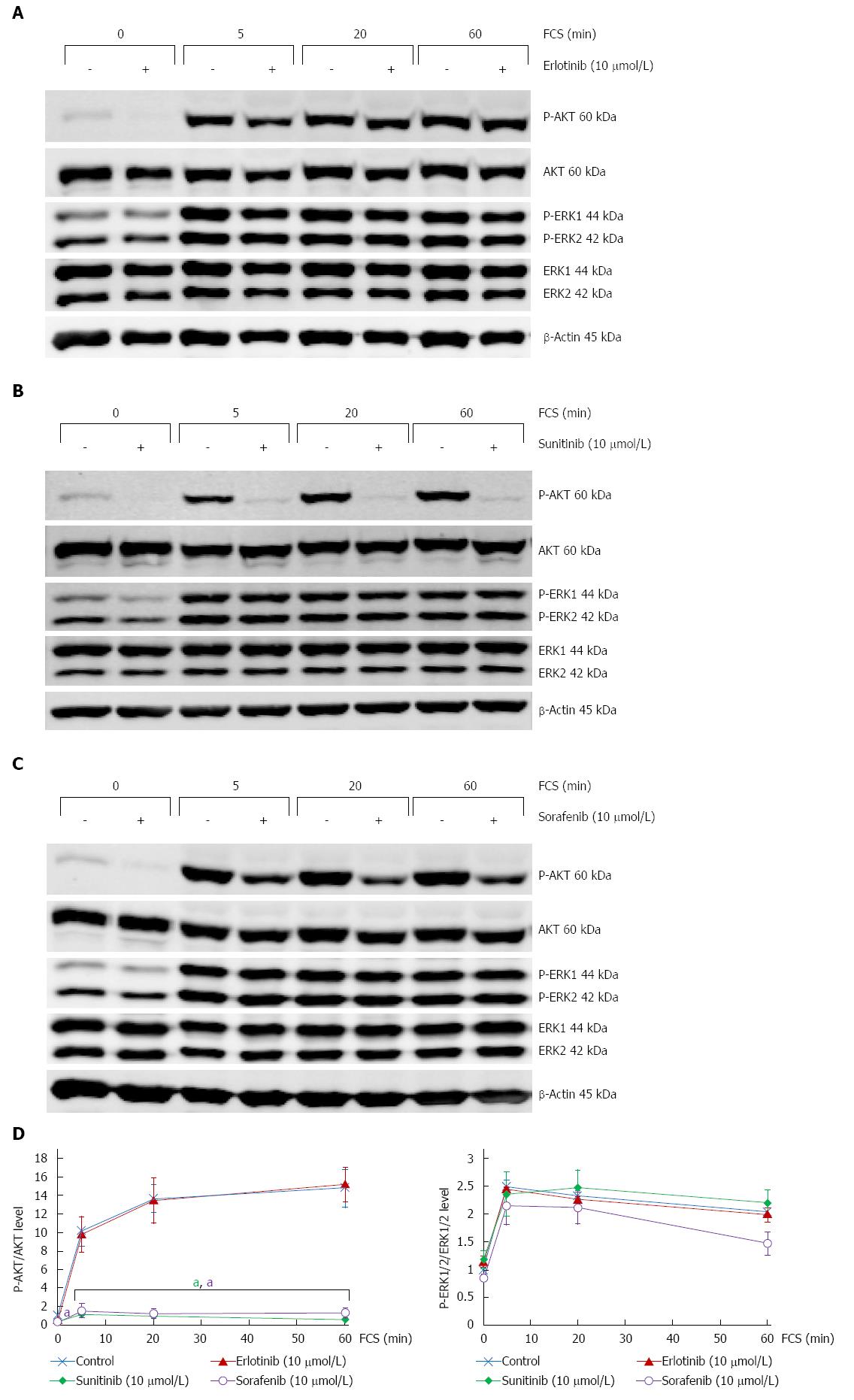Copyright
©2014 Baishideng Publishing Group Inc.
World J Gastroenterol. Jun 28, 2014; 20(24): 7914-7925
Published online Jun 28, 2014. doi: 10.3748/wjg.v20.i24.7914
Published online Jun 28, 2014. doi: 10.3748/wjg.v20.i24.7914
Figure 2 Distinct effects of erlotinib, sorafenib and sunitinib on phosphorylation of AKT and ERK1/2.
Cultured pancreatic stellate cells (PSC) were grown to subconfluency before the standard culture medium was substituted by fetal calf serum (FCS)-free medium. 16 h later, culture medium was supplemented with (A) erlotinib, (B) sunitinib and (C) sorafenib at the indicated concentrations and incubation continued for another hour. Subsequently, FCS (at 17%) was added for the indicated periods of time. Afterwards, protein extracts from equal amounts of cells were subjected to Western blot analysis. P-AKT, P-ERK1/2, the respective total proteins and β-actin (for loading control) were detected using fluorescein (IRDye®)-labelled secondary antibodies. For each inhibitor, one representative Western blot is shown; D: Fluorescence signal intensities of phosphoproteins (P-AKT and P-ERK1/2, respectively) and corresponding total proteins were quantified using Odyssey® software. Subsequently, the ratios P-AKT/AKT protein (left panel) and P-ERK/ERK protein (right panel) were determined. A ratio of 1 corresponds to control cells cultured without small molecule kinase inhibitors (SMI) and FCS. Data of n≥ 4 independent experiments were used to calculate mean ± SE; aP < 0.05 vs control cultures (no SMI, same time of FCS stimulation).
- Citation: Elsner A, Lange F, Fitzner B, Heuschkel M, Krause BJ, Jaster R. Distinct antifibrogenic effects of erlotinib, sunitinib and sorafenib on rat pancreatic stellate cells. World J Gastroenterol 2014; 20(24): 7914-7925
- URL: https://www.wjgnet.com/1007-9327/full/v20/i24/7914.htm
- DOI: https://dx.doi.org/10.3748/wjg.v20.i24.7914









